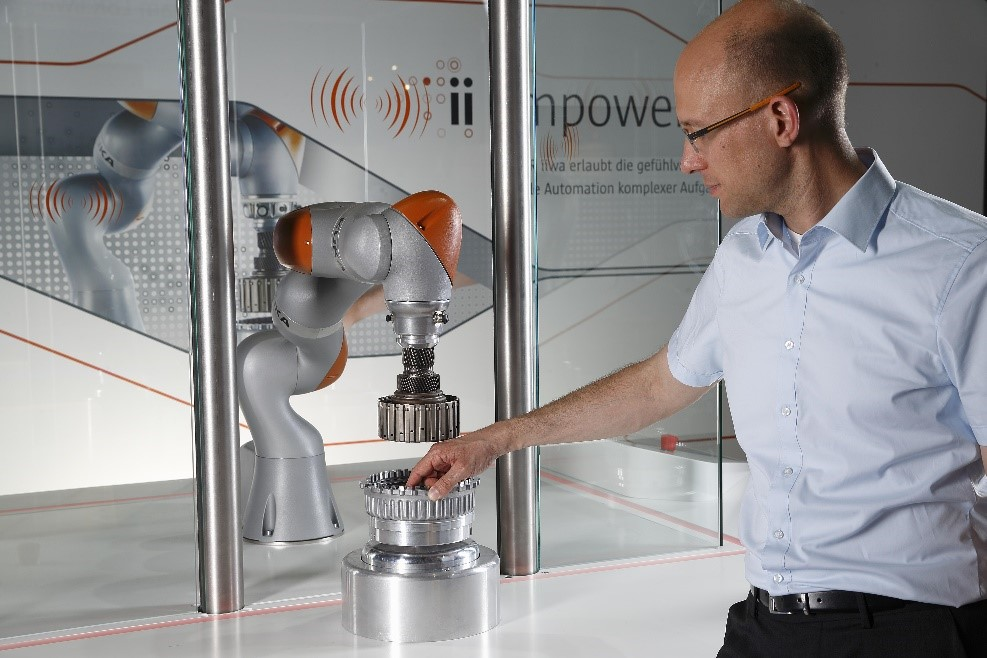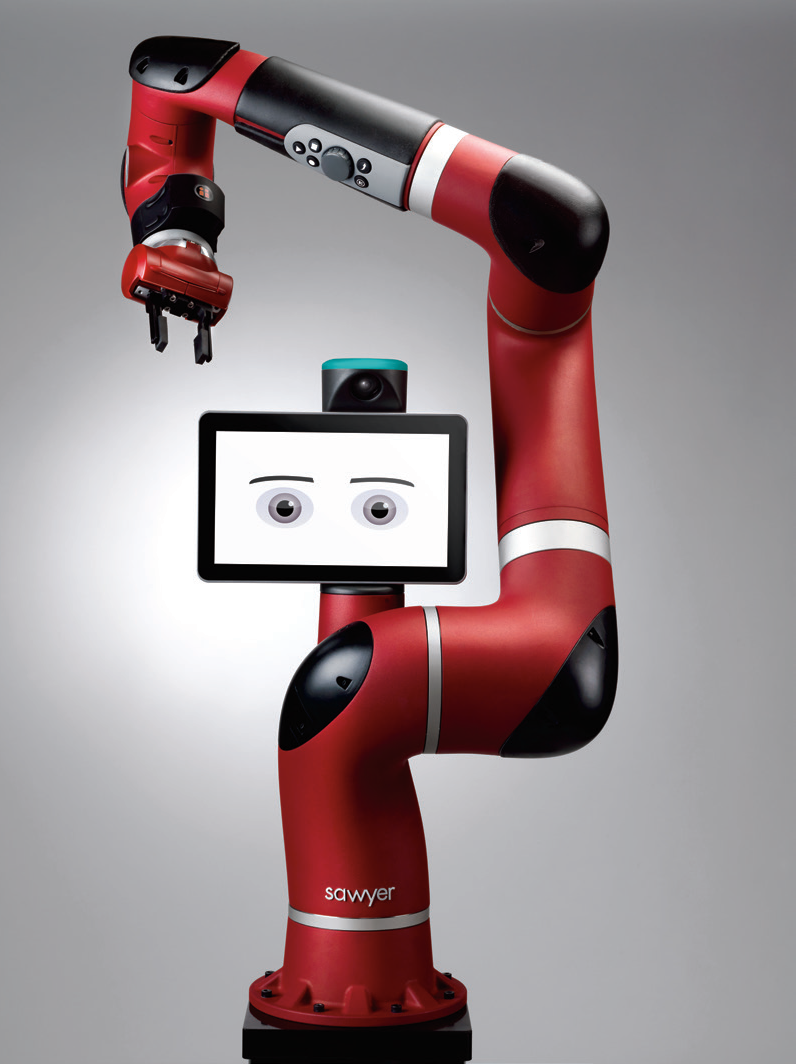Rethink Robotics today provided a glimpse into the future of collaborative robotics with the introduction of Sawyer, a single-arm, high-performance robot designed to execute machine tending, circuit board testing and other precise tasks that have historically been impractical to automate with traditional industrial robots. Sawyer is a significant addition to the company’s smart, collaborative robot family, which also includes the groundbreaking Baxter robot that defined the category of safe, interactive, affordable automation.
Sawyer offers the same highly-touted safety, compliance and usability advantages of Baxter – including the iconic “face” screen, embedded sensors and train-by-demonstration user interface – while providing the smaller footprint and high precision performance needed for tasks that require significant agility and flexibility. In addition, Sawyer runs on the Intera software system, the same extensible platform that powers Baxter, so it works like humans do by dynamically adapting to real-world conditions on the plant floor and integrating seamlessly into existing work cells. Together, Baxter and Sawyer can address many of the estimated 90 percent of manufacturing tasks that cannot be feasibly automated with traditional solutions today according to the press release.
Weighing 19 kg (42 lbs), Sawyer features a 4kg (8.8 lb) payload, with 7 degrees of freedom and a 1-meter reach that can maneuver into the tight spaces and varied alignments of work cells designed for humans. Its high-resolution force sensing, embedded at each joint, enables Rethink Robotics’ compliant motion control, which allows the robot to “feel” its way into fixtures or machines, even when parts or positions vary. This enables an adaptive precision that is unique to the robotics industry and allows Sawyer to work effectively in semi-structured environments. In addition, Sawyer features an embedded vision system, which includes a camera in its head to perform applications requiring a wide field of view and a Cognex camera with a built-in light source in its wrist for precision vision applications. Sawyer’s vision system enables the Robot Positioning System for dynamic re-orientation, and over time will support more advanced features that are inherent to the Cognex system, such as barcode scanning and object recognition.
“With Baxter, we introduced the concept of robots and people working together on the plant floor,” said Rethink Robotics president and CEO Scott Eckert. “With Sawyer, we have taken that relationship to the next level, with a high performance robot that opens the door for many new applications that have never been good candidates for automation. As we continue to redefine this industry, we also continue to give manufacturers new ways of adding efficiency and flexibility into their operations.”
Jabil, a global electronic product solutions company that is partnering with Rethink Robotics as an early adopter and field tester of Sawyer, recognizes the robot’s immense potential. “Flexible automation that addresses shrinking product lifecycles and helps companies align with consumer trends is a critical technology initiative for manufacturers,” said John Dulchinos, vice president of digital manufacturing at Jabil. “Rethink Robotics continues to lead the way in defining how workers and machines can coexist to leverage the strengths of each, and optimize productivity for all.”
Dan Kara, robotics practice director at ABI Research, also sees the value of Sawyer for the robotics industry and its customers. “With the introduction of Baxter, Rethink fundamentally changed the conversation in the robotics industry and pioneered a new way of thinking about automation. Today, the collaborative concept has been accepted, the value has been proven, and more companies are looking to standardize globally on these solutions. Sawyer incorporates advanced technology from the Baxter platform, but is different in other fundamental aspects, making it suitable for wholly new classes of applications. Rethink’s Sawyer is a very compelling technology that has the potential to once again change the way manufacturers think about their automation infrastructure moving forward,” he concluded.
Sawyer, which will retail for a base price of $29,000, will initially be available in North America, Europe, China and Japan. It is currently being field tested by several large manufacturing companies in those regions. Sawyer will be released with limited availability in the summer of 2015, with general customer availability targeted for later in the year.
About Rethink Robotics
Rethink Robotics, Inc. helps manufacturers meet the challenges of an agile economy with an integrated workforce, combining trainable, safe and cost-effective robots with skilled labor. Its Baxter robot, driven by Intera, an advanced software platform, gives world-class manufacturers and distributors in automotive, plastics, consumer goods, electronics and more, a workforce multiplier that optimizes labor. With Rethink Robotics, manufacturers increase flexibility, lower costs and can invest in skilled labor—all advantages in fueling continuous innovation and sustainable competitive advantage.
Committed to accelerating robotics innovation in manufacturing and beyond, Rethink Robotics’ Baxter Research Robot gives academic and corporate research environments a humanoid robot platform with integrated sensors and an open software development kit for creating custom applications.
Based in Boston, Massachusetts, the company is funded by GE Ventures, Goldman Sachs, Bezos Expeditions, CRV, Highland Capital Partners, Sigma Partners, Draper Fisher Jurvetson, and Two Sigma Ventures.










